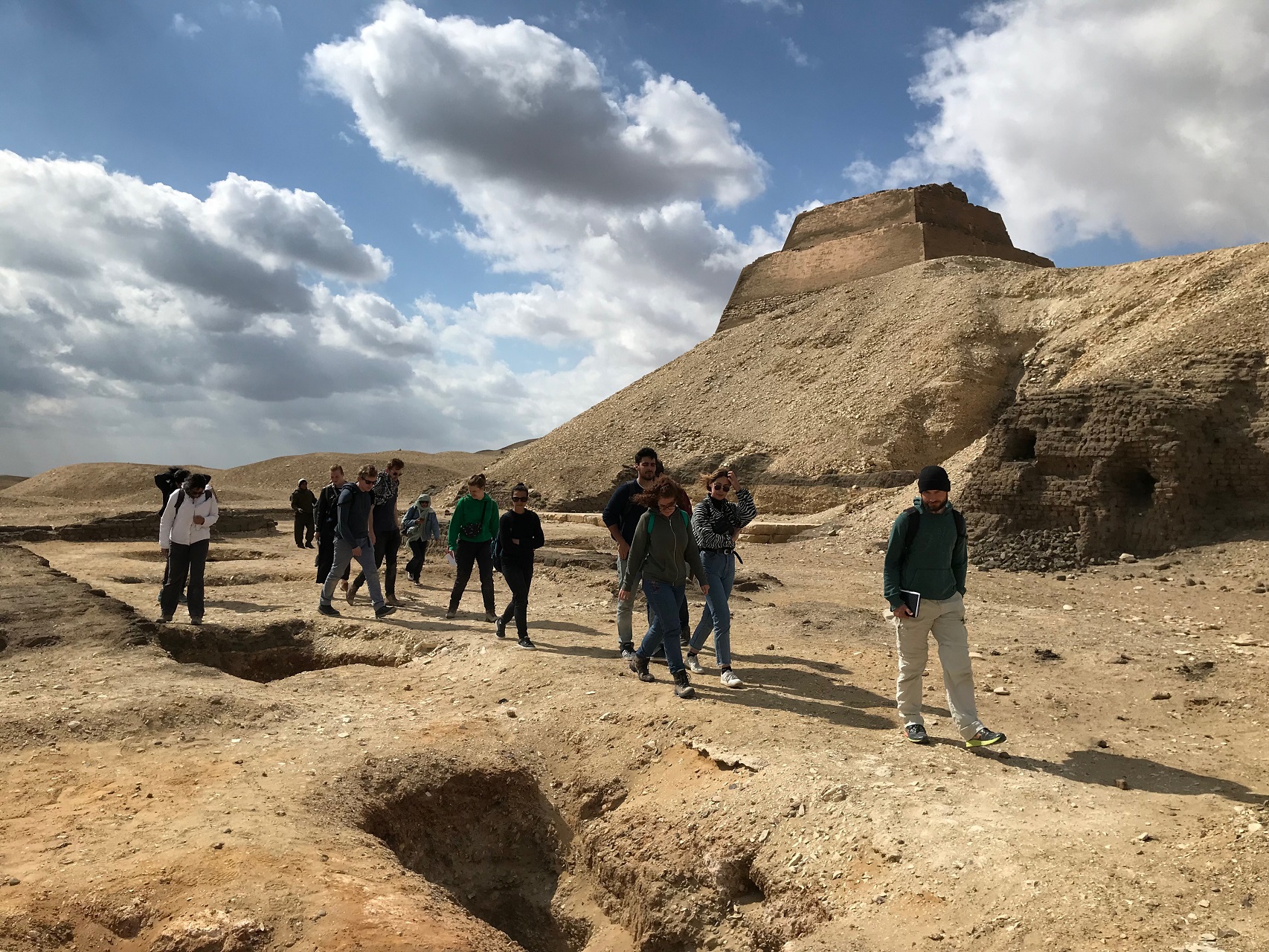Week 6: 9–15 February
The week of 9 February commenced with a trip to Meidum, which is about 100km south of Cairo. We were greeted by puppies and a lot of wind, and Marleen talked to us about the site and the Old Kingdom pyramid which has been attributed to Snefru (fig. 1). What remains is a step pyramid, but in the final phase of building smooth sides were added, and the structure became the first ‘true’ pyramid. This casing has largely degraded due to earthquakes and quarrying. The pyramid is situated in a mastaba field, with tombs which probably housed relatives of the king. We descended into the structure and ended up in the burial chamber, which was not used by the king, but is now home to many bats! (fig. 2).


After leaving the pyramid we went to a nearby mastaba with the designation Mastaba 17 (fig. 3). It was enormous, and likely belonged to the eldest son of the king though we unfortunately do not have any name associated with it. The entrance to the tomb was a puzzle for early excavators and it turns out that the only mode of ingress now is a robber’s tunnel. In two groups we took the route of the thieves and crawled through the tunnel (fig. 4) which opened up into a surprisingly large and well-constructed chamber containing an imposing granite sarcophagus and once again a colony of bats (fig. 5-6).




After touring the site for a little longer and seeing the pyramid temple and the mastaba of Nefermaat and Itet, we went to Lahun where Lieve talked to us about the 12th Dynasty pyramid of Senwosret II, which recently opened to the public (fig. 7). The interior of the pyramid was incredible, with plenty of room to navigate the tunnels (fig. 8). A tunnel circles around the burial chamber, which is likely of some symbolic value that we can only speculate on. We also walked around the mastabas and a satellite pyramid which reside on the north side. We concluded the day with a walk around the town of Kahun, which was quite large and stacked with pottery and other remains, though little standing architecture survives today.


On Monday we went to the Passport Office to renew our visas, a process which was to finish on Tuesday and which was actually quite efficient. Marleen delivered a seminar on Deir el-Bersha in the afternoon, which introduced the site to us; the Middle Kingdom tombs, New Kingdom and Late Period quarries, as well as Old Kingdom shaft and rock-cut tombs. The focus of the talk was on a restoration text found in several Old Kingdom (6th Dynasty) tombs, for which Djehutinakht, a governor from the First Intermediate Period, was responsible. It seems that this person interred members of his entourage in the older tombs, in order to renew the cult and demonstrate his own piety. Tuesday was a success with the visa renewal, and we had the afternoon off in preparation for our research papers and the GARDEN VII conference. Wednesday the 13th was also a self-study day with the second seminar delivered by Marleen on Bersha. This lecture was focused on cultic activity in the forecourts of Old Kingdom tombs; after overviewing typical funerary procession scenes we heard about evidence for an ‘embalmer’s cache’ in this area. The next day we all presented our research paper ideas with diverse and interesting topics, from work on stelae and sarcophagi spells, to statues and boomerangs used for fowling. The week concluded with a lecture by Jan Ciglenečki who spoke about the existence and development of (and interference with) monastic settlements in the Eastern Desert.
Dean Adair and Matthieu Cornelissen

